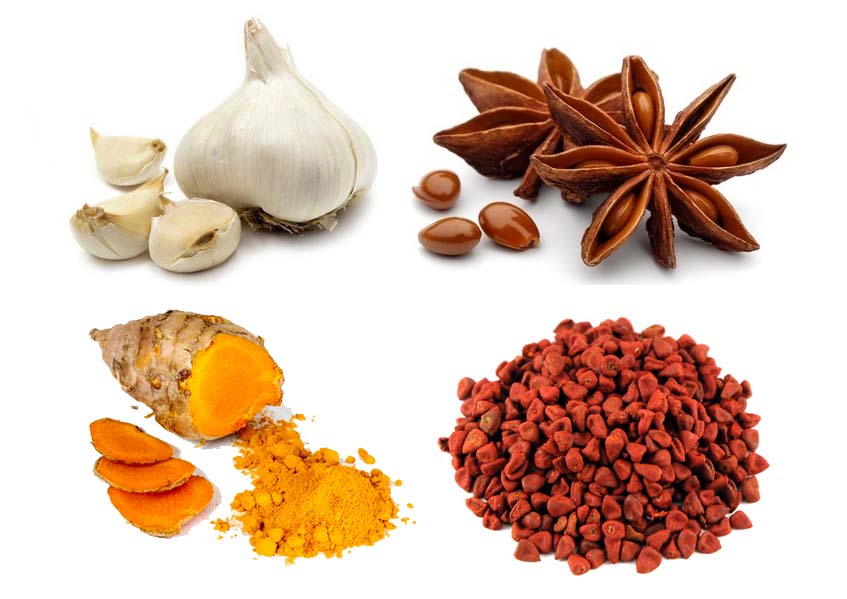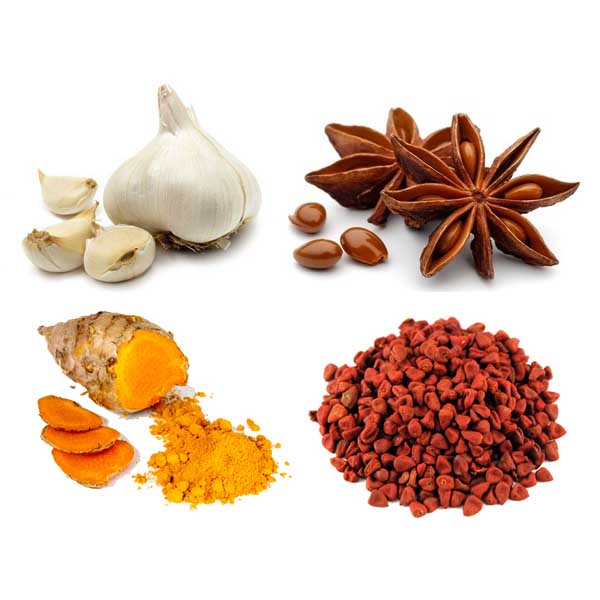
Spices have been used for centuries in a variety of ways. Spices make food more flavorful. With its blend of aromas permeating the air, one’s senses and appetite will surely be stimulated. Aside from flavoring food, they have been used as well as ingredients in magic potions, breath sweeteners and perfumes. These very same spices, though, also have medicinal properties that can be healing.
I would like to share with you the medicinal value of common flavors and spices.
Anis (Foeniculum vulgare Gaertn). Also known as fennel, anis is usually good for gas pain. Soak one fourth teaspoon of the dried crushed fruit in one half cup of hot water for 30 minutes. Drink as an infusion. Another use of anis is for fainting. Just inhale the crushed fruit or seed and voila! The fainting spell is gone!
Atsuete (Bixa orellana L.). Research findings show that the seeds have some antibiotic properties due to its volatile fatty oil with palmitin and stearin alkaloids, saponin and tannin. Atsuete seeds, otherwise known as annatto, are mainly used in the Philippines to give an attractive reddish and orange color to certain dishes. The seeds’ coloring matter is bixin.
The main medicinal use is as a wound wash or a gargle for sore throat. Boil one tablespoon of atsuete seeds in two glassfuls of water until it boils down to one glassful. Cool then use accordingly.
Bawang (Allium sativum L.) or garlic. Research findings have shown that garlic has cholesterol lowering properties. The bulb contains allicin, volatile oil, sulfides, protein, fat, carbohydrates, choline and myrosinase.
Allicin has been found to inhibit a broad variety of bacteria, fungi and protozoa.
Other researchers abroad have reported garlic to lower blood sugar, prevent the accumulation of fats in the blood vessels and increase the amount of urine. It has anti-clotting properties and also anti-obesity action.
Garlic has been studied to expel gas from the alimentary canal. It also expels intestinal worms, induces excessive perspiration and expels mucus, acting as an expectorant.
Garlic is rich in calcium, iron, phosphorus, vitamins A, B and C. Its fresh leaves are also eaten as a vegetable.
Recommended medicinal uses: For lowering of blood cholesterol: eat two roasted pieces of garlic clove three times a day after meals.
For headache, insect bites and rheumatism: Crush enough fresh cloves, mix with a few drops of baby oil and rub on affected areas.
For skin fungal infections: Boil together for a minute one tablespoon of crushed cloves and one tablespoon of coconut oil or baby oil. Cool and apply three times a day on affected skin areas.
For toothache: Place a small piece of fresh clove into the aching tooth. Gently crush the clove so that the juices inside can flow around the tooth. Throw out the clove afterwards, and rinse with lukewarm water.
For cough to expel phlegm: Mix one teaspoon of crushed cloves with honey. Drink three to four times a day after meals.
Tincture of atsuete and bawang. I usually ask households to make their own tincture with bixa seeds and crushed garlic cloves. As an alcohol base, I recommend using gin or lambanog.
For example: For every one tablespoon of mixed bixa seeds and crushed garlic cloves, use 10 tablespoonful of gin or lambanog. Place in an amber glass. Shake for three minutes every day for seven days before using.
Externally, the tincture can be used for wounds, fungal skin infections and insect bites. Internally, as a mouth wash or toothache, add 10 drops of the tincture in one half glass of water and then gargle.
Dilaw (Curcuma longa L.) or turmeric. The rhizome is used as a coloring agent and flavoring for many dishes. It is a good source of phosphorus and iron. The rhizome contains volatile oil, fat, starch, resin and cucurmin which gives the characteristic yellow pigment.
Recommended medicinal uses: For wounds as an antiseptic. Crush the fresh rhizome and apply on the wound.
For gas pain in adults: Boil a thumb sized piece of rhizome in a glass of water until it reduces to one half glass. Drink the decoction.
For chest pain, sprains, swellings and joint pains: Extract the juice from the rhizome and apply on the affected areas.
More spices and flavors next time !





